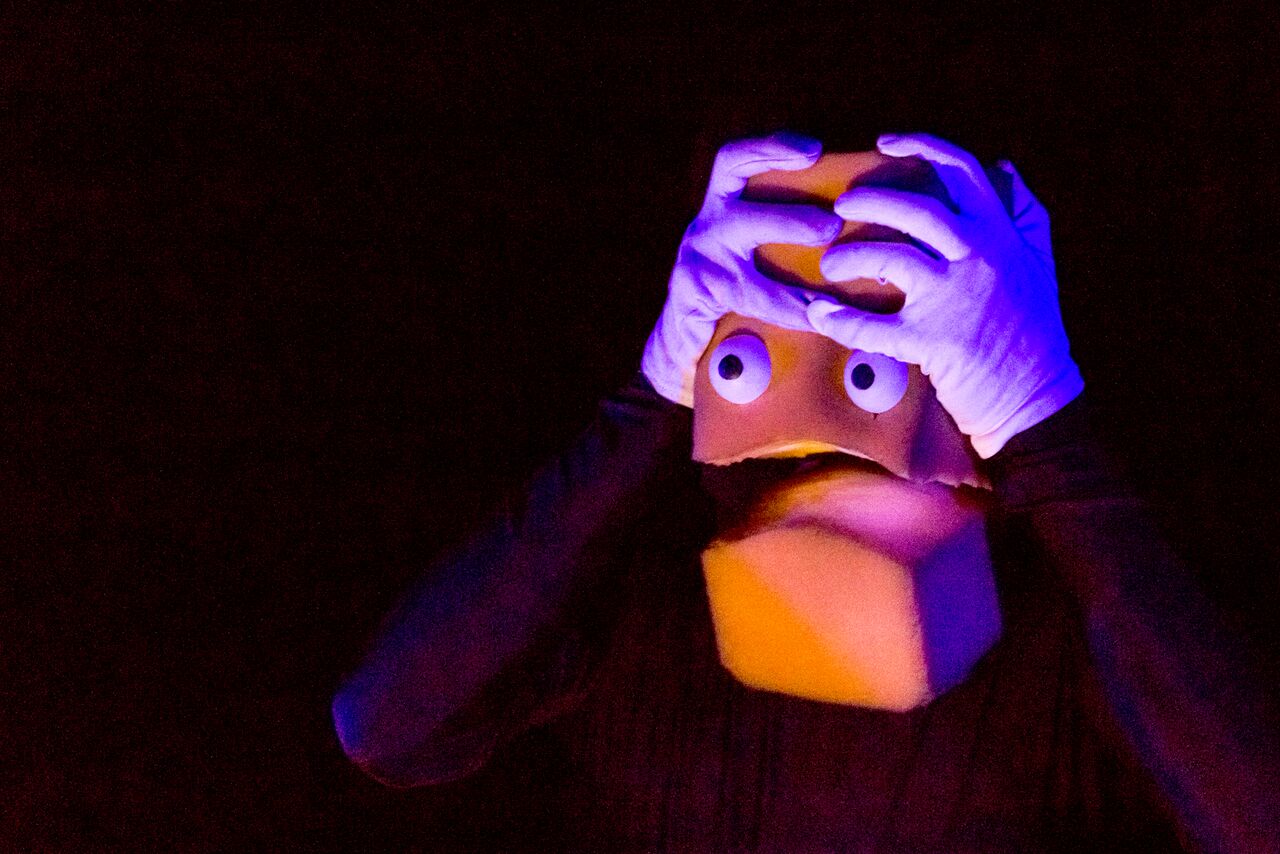The Last Great Hunt burst onto the scene in Edinburgh back in 2011. The Adventures of Alvin Sputnik, solo creation of puppeteer/artist Tim Watts, presented a new virtuosity of visual storytelling, stylishly blending hand puppetry, animation and music with emotional depth charges of narrative in this tale of bereavement as a perilous quest. Their follow-up in 2013, It’s Dark Outside, filled larger stages with a Western-framed journey into the unknown – in this case into the undiscovered territory of dementia, uncovering a range of ambitious, articulate visual metaphors for the experiences of their protagonist and his family. Their work has always been filmic in both form and inspiration and emotionally profound, delivering a sucker punch of formal invention in their highly visual style, alongside genuinely moving narratives, that it’s rare to see so effectively combined.
In Bruce, it’s the soapy melodrama of pulp movies that drives the non-stop action. Like Alvin Sputnik, our protagonist is determinedly lo-fi; no elaborate puppet making here. The character is conjured via an oversized sponge with a clean-cut mouth, two googly eyes, and two white-gloved hands, animated to their absolute limits by Watts (with co-performer Wyatt Nixon-Lloyd). On a cleverly-lit stage, the mic’d performers who provide all character voices, and many of the sound effects as well, blend with the background, even as we marvel at their virtuosity, placing the objects magically centrestage. And there, firmly in the spotlight, the world of characters conjured using only their hands, voices, the sponge, and an occasional eyepatch (‘half a ping pong ball’ we are ruefully told) go ahead and deliver in blockbuster style.
We begin, classically, in medias res. Bruce is in a rocket attempting re-entry to return home to his pregnant partner, herself just about to give birth (you may guess where the scene will end). The show’s epic soundtrack plays on this juxtaposition of large-scale narrative – rockets launching, giant fires – against the lo-fi staging, to create a constant tickle of absurdity that empowers both elements. The narrative is sophisticated, encompassing travel in space and time, and the sort of jump-cuts more familiar on the big screen. There are, too some really ambitious dialogue scenes which push the capacity of the staging with a single sponge to its limits. You can feel the playfulness at the heart of creating this show. Yet, as a whole, the final produce feels too slick, a little too knowing to match the emotional punch of previous work. Bruce is impressive, technically virtuosic, and with a really well-structured story to tell, but its demonstration of the myriad possibilities of this playful stagecraft limits the focus we need to really care. The character feels like a function of the story the artists want to tell in this form, rather than driving it himself, and I miss some of the wonder and warmth that have previously empowered their stories.
Bruce premiered in the company’s native Australia in 2014 (first playing Edinburgh in 2015) and has been touring ever since, remaining a rock-solid demonstration of both the power of great puppetry to bring to life even the wildest rides of narrative and the company’s ongoing brilliant and entertaining innovation with the form.
Featured image: Bruce, photo by Jamie Breen.

